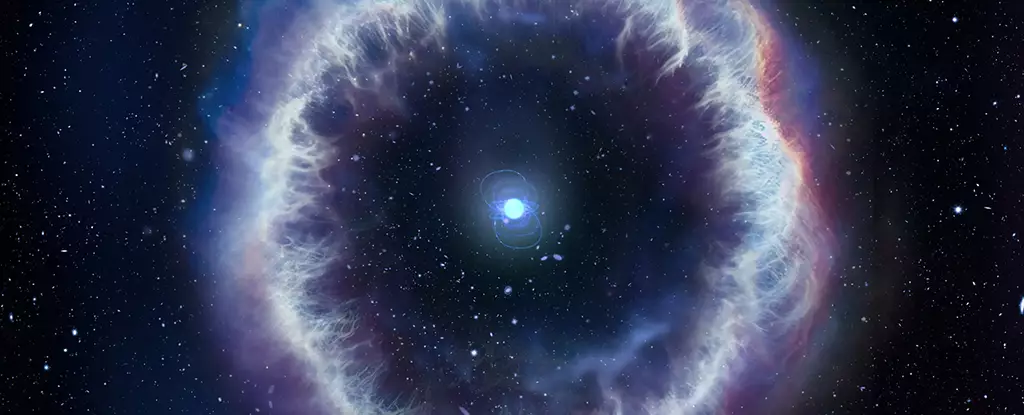Fast radio bursts (FRBs) have captured the attention of scientists and astronomers around the world due to their sudden and intense blasts of radio wave energy from deep space. These mysterious signals remain one of the most intriguing mysteries in astrophysics, leaving researchers with more questions than answers. However, a new study led by a team from the Italian National Institute for Astrophysics (INAF) sheds light on what might be generating these enigmatic bursts, providing valuable insights into the origins of FRBs.
In the study, researchers focused on analyzing FRB 20201124A, first discovered in 2020. Specifically, they honed in on a persistent radio source (PRS) located near the FRB. These PRS signals have been observed near a small number of FRBs, leading scientists to speculate that they could be closely linked to the bursts themselves. By studying the PRS signals, researchers found that they were most likely originating from a plasma bubble surrounding the mysterious source of the FRB.
The plasma bubble identified by the researchers is known as an ionized nebula, which is a cloud of electrically charged gas and dust in space. According to astrophysicist Gabriele Bruni from the INAF, measurements of the PRS revealed weak persistent emissions originating from the same location as the FRB. This discovery extended the range of radio flux explored for these objects by two orders of magnitude, providing crucial data for understanding the nature of FRBs.
Possible Origins of FRBs
The collected data, which included observations from the Very Large Array (VLA) Radio Telescope in New Mexico, pointed to the potential origins of the nebula surrounding the FRB source. The nebula could be the result of a young magnetar, an ultra-dense, ultra-magnetic star, or a binary system featuring a neutron star or a black hole left over from a supernova event. Any of these celestial phenomena could generate large amounts of energy capable of triggering the intense signals associated with FRBs.
Implications of the Research
While there are still many unanswered questions about FRB 20201124A, the research conducted by the team from the INAF has provided valuable insights into the mechanisms behind these mysterious bursts. The high-resolution data collected from various telescopes, including the Northern Extended Millimeter Array (NOEMA) and Gran Telescopio Canarias, has allowed researchers to decode the signals emitted by the system over a distance of over a billion light-years.
A Step Closer to Understanding FRBs
Astrophysicist Brendan O’Connor from Carnegie Mellon University explains that the research has helped constrain the actual size of the source of FRB 20201124A. The data collected at different wavelengths of light has provided a clearer picture of the energy release by the system, bringing scientists closer to unravelling the mysteries of FRBs. By piecing together the puzzle surrounding these enigmatic signals, researchers hope to shed light on the cosmic phenomena that generate these intense bursts of radio wave energy.
The study of FRBs continues to be a fascinating area of research in the field of astrophysics. The recent findings regarding FRB 20201124A have provided valuable insights into the potential origins of these mysterious signals, bringing us one step closer to unlocking the secrets of fast radio bursts and their enigmatic sources in deep space.

Leave a Reply